| |||||
| Decades: | |||||
|---|---|---|---|---|---|
| See also: | |||||
The following events occurred in Antarctica in 2021 .
| |||||
| Decades: | |||||
|---|---|---|---|---|---|
| See also: | |||||
The following events occurred in Antarctica in 2021 .
Ongoing: COVID-19 pandemic in Antarctica

The Antarctic Treaty and related agreements, collectively known as the Antarctic Treaty System (ATS), regulate international relations with respect to Antarctica, Earth's only continent without a native human population. It was the first arms control agreement established during the Cold War, designating the continent as a scientific preserve, establishing freedom of scientific investigation, and banning military activity; for the purposes of the treaty system, Antarctica is defined as all the land and ice shelves south of 60°S latitude. Since September 2004, the Antarctic Treaty Secretariat, which implements the treaty system, is headquartered in Buenos Aires, Argentina.
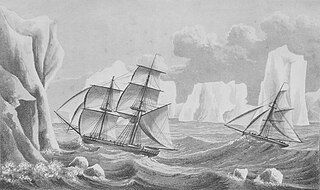
The history of Antarctica emerges from early Western theories of a vast continent, known as Terra Australis, believed to exist in the far south of the globe. The term Antarctic, referring to the opposite of the Arctic Circle, was coined by Marinus of Tyre in the 2nd century AD.
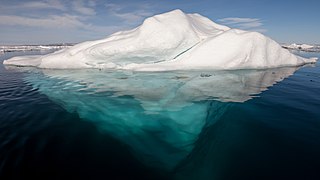
An iceberg is a piece of freshwater ice more than 15 m long that has broken off a glacier or an ice shelf and is floating freely in open (salt) water. Smaller chunks of floating glacially-derived ice are called "growlers" or "bergy bits". Much of an iceberg is below the water's surface, which led to the expression "tip of the iceberg" to illustrate a small part of a larger unseen issue. Icebergs are considered a serious maritime hazard.

The climate of Antarctica is the coldest on Earth. The continent is also extremely dry, averaging 166 mm (6.5 in) of precipitation per year. Snow rarely melts on most parts of the continent, and, after being compressed, becomes the glacier ice that makes up the ice sheet. Weather fronts rarely penetrate far into the continent, because of the katabatic winds. Most of Antarctica has an ice-cap climate with extremely cold and dry weather.

Iceberg B-15 was the largest recorded iceberg by area. It measured around 295 by 37 kilometres, with a surface area of 11,000 square kilometres, about the size of the island of Jamaica. Calved from the Ross Ice Shelf of Antarctica in March 2000, Iceberg B-15 broke up into smaller icebergs, the largest of which was named Iceberg B-15-A. In 2003, B-15A drifted away from Ross Island into the Ross Sea and headed north, eventually breaking up into several smaller icebergs in October 2005. In 2018, a large piece of the original iceberg was steadily moving northward, located between the Falkland Islands and South Georgia Island. As of August 2023, the U.S. National Ice Center (USNIC) still lists one extant piece of B-15 that meets the minimum threshold for tracking. This iceberg, B-15AB, measures 20 km × 7 km ; it is currently grounded off the coast of Antarctica in the western sector of the Amery region.
A flag of Antarctica is a flag or flag design that represents the continent of Antarctica. As a condominium with no single governing body, it does not have an official flag of its own. However, several designs have been created for the purpose of representing the continent.

The Chilean Antarctic Territory or Chilean Antarctica is a part of West Antarctica claimed by Chile. It comprises the region south of 60°S latitude and the area between longitudes 53°W and 90°W, partially overlapping with the Antarctic claims of Argentina and the United Kingdom. The Antártica commune is administered by the Cabo de Hornos municipality on the South American mainland.

Encounters at the End of the World is a 2007 American documentary film by Werner Herzog about Antarctica and the people who choose to spend time there. It was released in North America on June 11, 2008, and distributed by ThinkFilm. At the 81st Academy Awards, the film was nominated for Best Documentary Feature.

Antarctica is Earth's southernmost and least-populated continent. Situated almost entirely south of the Antarctic Circle and surrounded by the Southern Ocean, it contains the geographic South Pole. Antarctica is the fifth-largest continent, being about 40% larger than Europe, and has an area of 14,200,000 km2 (5,500,000 sq mi). Most of Antarctica is covered by the Antarctic ice sheet, with an average thickness of 1.9 km (1.2 mi).
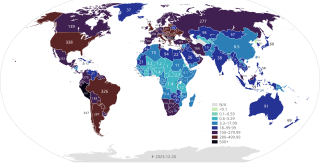
This is a general overview and status of places affected by severe acute respiratory syndrome coronavirus 2 (SARS-CoV-2), the virus which causes coronavirus disease 2019 (COVID-19) and is responsible for the COVID-19 pandemic. The first human cases of COVID-19 were identified in Wuhan, the capital of the province of Hubei in China in December 2019.

The COVID-19 pandemic began in Asia in Wuhan, Hubei, China, and has spread widely through the continent. As of 18 December 2023, at least one case of COVID-19 had been reported in every country in Asia except Turkmenistan.

The worldwide pandemic of coronavirus disease 2019 caused by severe acute respiratory syndrome coronavirus 2 severely affected Chile. The virus was confirmed to have reached Chile on 3 March 2020. Initial cases had been imported from Southeast Asia and Europe, and expanded into a large number of untraceable infections, placing the country within phase 4 of the pandemic as defined by the World Health Organization, with over 1,000 confirmed cases by 25 March 2020.

The COVID-19 pandemic was confirmed to have spread to Africa on 14 February 2020, with the first confirmed case announced in Egypt. The first confirmed case in sub-Saharan Africa was announced in Nigeria at the end of February 2020. Within three months, the virus had spread throughout the continent, as Lesotho, the last African sovereign state to have remained free of the virus, reported a case on 13 May 2020. By 26 May, it appeared that most African countries were experiencing community transmission, although testing capacity was limited. Most of the identified imported cases arrived from Europe and the United States rather than from China where the virus originated.
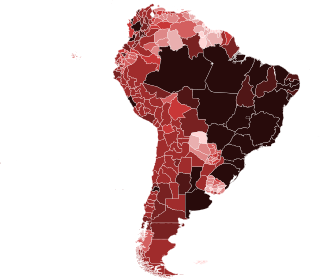
The COVID-19 pandemic was confirmed to have reached South America on 26 February 2020 when Brazil confirmed a case in São Paulo. By 3 April, all countries and territories in South America had recorded at least one case.
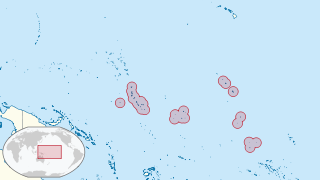
The COVID-19 pandemic in Kiribati is part of the ongoing worldwide pandemic of coronavirus disease 2019 caused by severe acute respiratory syndrome coronavirus 2. The virus was confirmed to have reached Kiribati on 18 May 2021.

The COVID-19 pandemic in Antarctica is part of the worldwide pandemic of coronavirus disease 2019 caused by severe acute respiratory syndrome coronavirus 2. Due to its remoteness and sparse population, Antarctica was the last continent to have confirmed cases of COVID-19 and was one of the last regions of the world affected directly by the pandemic. The first cases were reported in December 2020, almost a year after the first cases of COVID-19 were detected in China. At least 36 people are confirmed to have been infected. Even before the first cases on the continent were reported, human activity in Antarctica was indirectly impacted.
This is a list of events occurring in Antarctica in 2023.